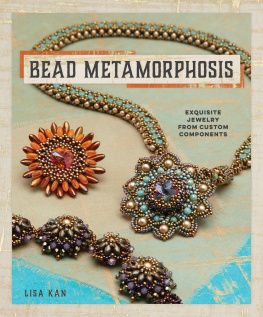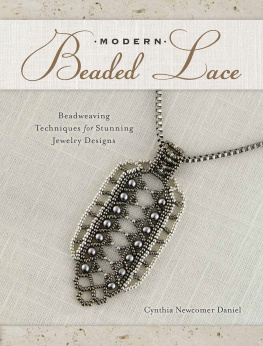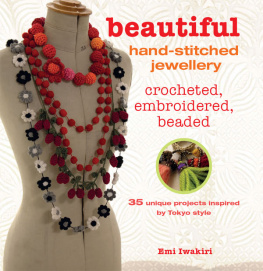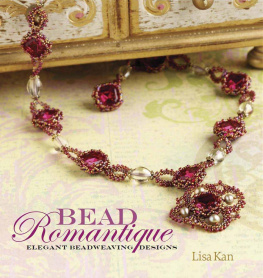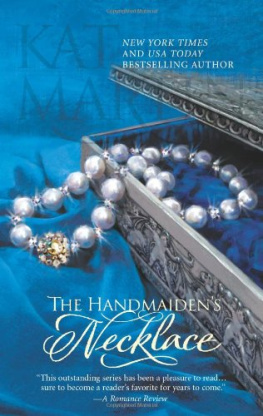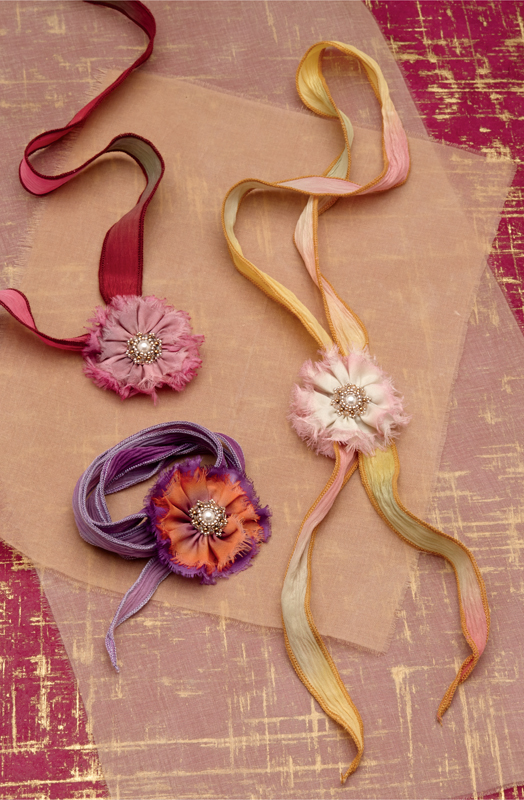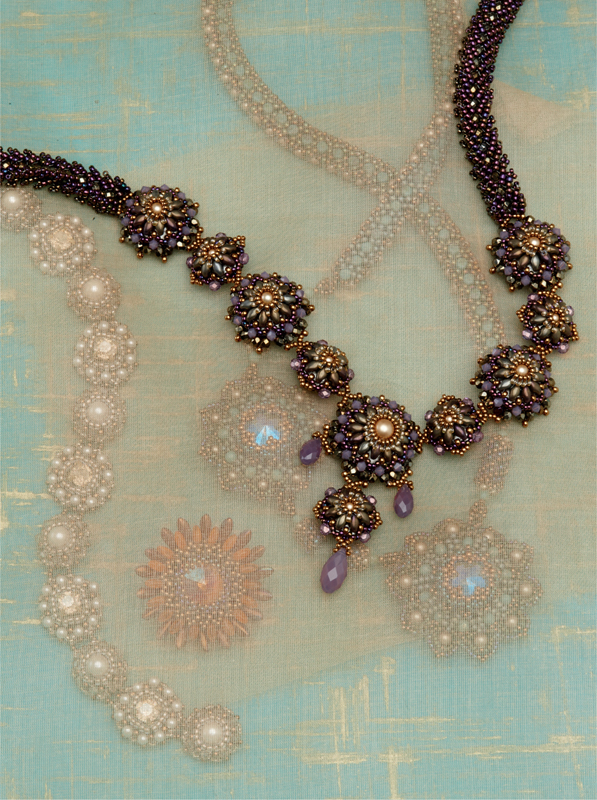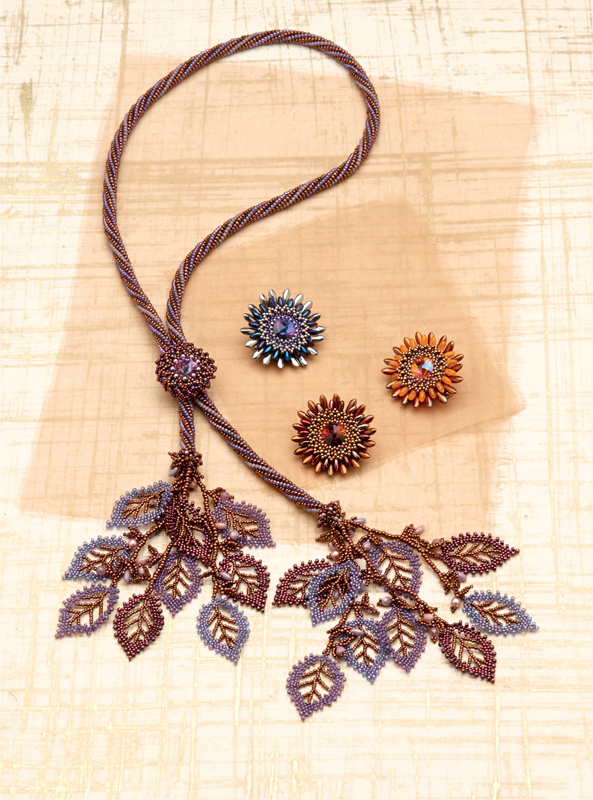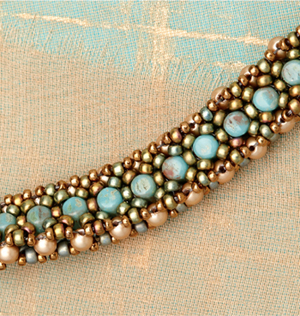Contents
Guide
For Audrey, Kayla, and Wesleythe next generation of artists.
Love, Auntie Lisa
CONTENTS
From Butterflies & Dragonflies to Beads
If you are not already familiar with my design style from my first book, Bead Romantique, my beadwork is often inspired by different historical periods. I have to confess that as I began designing projects for Bead Metamorphosis, I spent a lot of time also catching up watching The Tudors and two seasons of Game of Thrones.
Seeing all the costumes and jewelry from the respective periods inspired me to create designs like the Catherine Collection, the Crown Jewels Collection, and Sundara. My fondness for the art nouveau, art deco, and Roaring Twenties periods resulted in the Deco Lace Collection, Isadora Earrings, and the Audrey Fringe Bracelet. Mother Nature is also close to my heart and came to life through Bella Fiore, Hanami, the Chrysanthemum Brooch, and the Kayla Lariat. The metamorphosis theme, central to this book, is best illustrated in the design Encanto, where you can disassemble and reassemble components that are both reversible as well as interchangeable.
All the designs in Bead Metamorphosis are broken down into easy-to-follow steps and diagrams. Designs in collections have similar components that transform through a change of beads, bead counts, or methods of embellishment. Like the wondrous transformation of a butterfly or dragonfly in nature, each component transforms to create many variations. As you progress through the projects, I hope they inspire you to think about modular and component designing.
I also focused on creating wearable jewelry with innovative, modern shaped beads such as SuperDuos, Rizos, Rullas, and CzechMate bricks and lentils, all of which can be easily found at your local bead shop or online.
In the Color and Inspiration chapter, I share how I develop my ideas for my designs. I approach color in a non-academic manner with everyday objects and observations. Inspiration is all around usyou really dont have to look that hardand eventually choosing colors for your projects will be a natural instinct.
Beadweaving is not an instant-gratification craft. It is an art that builds on the simple skills first and then develops into more intricate beadwork with layers upon layers of personal creativity. I enjoy building on the standard stitches, resulting in a design that appears complex but is created using simple techniques, therefore showing endless possibilities of each stitch. It is vital to learn the basic bead stitches: peyote, brick, square, ladder, right-angle weave, herringbone (Ndebele), netting, and others that will develop skills for more complicated stitches such as St. Petersburg and cubic right-angle weave.
When and if you do get stuck with any of the projects, I am only an email away at .
Enjoy and bead creatively,
Materials & Tools
Those who find beadweaving rewarding know that selecting materials and colors are two of the most important factors in creating beautiful results. With the amount of hours one puts into weaving tiny beads into cohesive designs, it is key to start with a selection of quality materials and the proper tools.
Never hurry or rush to finish a project. A design should look as beautiful in the back as it does in the front. Taking shortcuts in finishing techniques will only result in an unsatisfactory outcome.
Bead Selection
Seed Beads
Seed beads come in a variety of sizes. The size is indicated by a number; the smaller the numbered size (6, 8, 10, 11, 13, 15, etc.), the larger the bead. The seed beads used throughout this book are all Japanese seed beads, mostly the round shape in various colors and finishes. Miyuki, Toho, and Matsuno are the three major manufacturers of Japanese seed beads. Toho beads have the largest holes of the three companies, making them great for designs that have multiple thread passes. Some seed bead colors (with different color nomenclature) cross over among the three manufacturers and therefore can be used interchangeably.
Seed beads
Seed bead finishes and manufacturing processes have improved since I wrote Bead Romantique. In the past, I avoided galvanized seed beads. Both Toho and Miyuki now produce Permanent Finish and Duracoat seed beads, respectively, which are less prone to rub off and deteriorate. Also, with the collaboration between the Japanese seed bead manufacturers and Czech bead manufacturers, additional colors are now available with aftermarket coatings such as Picasso, travertine, hematite, magic, capri gold, sliperit, and vega. Even now, I personally avoid dyed seed beads because they tend to fade over time with wear.
Crystals, Pearls, and Shaped Beads
Rivolis and Fancy Stones are multifaceted stones made by Swarovski that are used as cabochons and bezel set with seed beads. The projects in this book use size 12mm, 14mm, and 16mm rivolis and pear-shaped rhinestones. Most of the rhinestones are foil-backed to enhance color and sparkle. There are also a variety of after-market custom coatings and effects applied by EH Ashley on Swarovski components that add color dimension to beadwork. Some of these beautiful coatings are Purple Haze, Chili Pepper, Verde, Brandy, Sahara, Sphinx, Champagne, and Glacier Blue. (For a full list, visit EHashley.com.)
Crystal pearls and Czech glass pearls are produced by Swarovski and Czech bead manufacturers. Crystal pearls are crystals coated with a thick pearl-like substance. They come in various sizes and shapes. The number of coatings determines its durability. The coatings on both crystal and glass pearls can be scratched off from high abrasion or friction. Simulated imitation glass pearls have the look of genuine pearls, but are uniform and economical.
Czech Shaped Innovations and two-hole beads are used in the designs of this book. The Czech Republic, well known for its glass beads and special coatings, has been quite innovative in introducing and expanding the two-hole bead selection. Some designs in this book use beads such as SuperDuos, Rullas, and the CzechMate System from Starman, Inc., to create historically inspired designs with modern components. These Czech glass beads are pressed with a mold, resulting in a uniform shape for precision beadwork. Everything fits together like a puzzle. Other shaped beads like the Rizo drops are also pressed glass. They make wonderful accents or embellishments. There is never a loss of choices, as all these beads are available in similar color palettes. The question is which color and shape to use!

